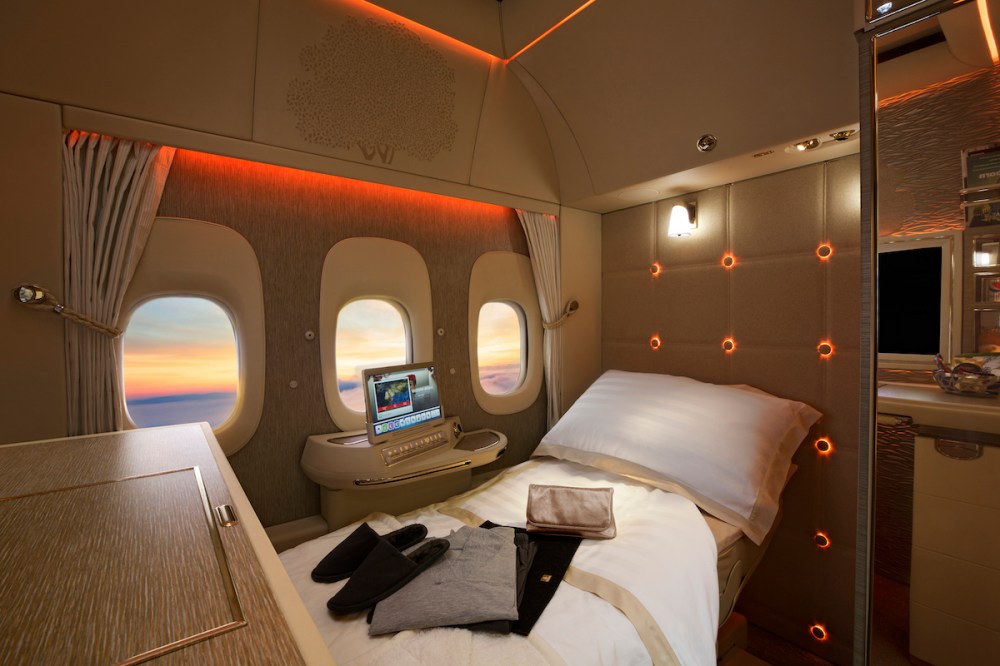Aviation is changing. The industry is moving far, far away from what it once was, and evolving into something completely different. Whilst there are endless developments, most recently, changes to First Class are a sign of the current state of the world, all due to two core issues: increasing costs and Low Cost Carriers (LCC’s).
Let’s just understand the situation. In the past month, Singapore Airlines and Emirates both announced spectacular new First Class products that are quantum leaps ahead of what they offered before. Both products are much larger and more opulent than before, but also come in fewer numbers, with SQ seeing a 50% reduction and EK a 25% reduction in seats. So there’s the first sign: First Class demand is tumbling. Many carriers (including Qantas and Cathay Pacific) have been phasing out or dramatically reducing the prevalence of First Class throughout their fleet, whilst others (e.g. Virgin Atlantic, Delta) never offered a proper international First product. First Class is a novelty, and stands a significant brand asset rather than a legitimate profit generator. The costs of having a First cabin are often unjustifiable, given the number of frequent flyer redemptions and staff travelling in these areas. Business travellers opt for Business or Economy Class, whilst the majority of premium leisure travellers regularly trade down for Business products.


Costs in the industry are rising, and prices are falling. Why? LCC’s. The rise of the budget carrier has dramatically shaken the industry to the core, as more and more people prioritise costs over experience. As Full Service Carriers (FSC’s) begin to legitimately compete with LCC’s (who were previously thought to attract a completely different market), there is downward pressure on airfares, reducing yield. This downward pressure is focused on the lower end of the market, meaning Economy Class for FSC’s is being impacted the most.
So how are FSC’s responding? Recent developments show that there is a greater push to make FSC Economy Class more budget, to compete with LCC’s. This is achieved through higher density seating, lower airfares and product de-bundling. Singapore Airlines’ new A380 features 40% more Economy seats than before, in order to offer lower fares and cater to higher demand. Many routes between Australia and Asia often see FSC’s charging at low as A$500 return, making them highly comparable to LCC’s. On the de-bundling front, Emirates has opened up a wide variety of paid seating options for Economy Class, charging different fees for exit rows, seats closer to the front and couple seats, a common LCC practice. Emirates even offers additional inflight dining options in Economy class for a charge.
These efforts are all indicative of a push to attract LCC passengers to FSC’s by providing more options and a better experience. However, they also serve another purpose: trading up. As the Economy experience begins to fall, regular FSC Economy travellers will be inclined to trade upwards for Premium Economy, Business or First Class. This is where FSC’s are focusing their efforts. Singapore Airlines’ new Business Class is higher density, but offers features and innovations a cut above. Delta and Qatar Airways have deployed enclosed suites in Business Class, all efforts to justify the higher price of these premium cabins.
So what is happening to First Class? As airlines realise that Economy Class is for LCC based travellers, and Premium Economy/ Business Class is for legacy FSC passengers, First Class is being increasingly tailored to the demands of the very summit of the market. Earlier, First was a viable option for many Business Class travellers, and an easy option for frequent flyers making use of lucrative mileage systems. By reducing the number of First Class seats, but making them leaps and bounds better than before, the airlines are able to limit award availability (for example, Singapore Airlines has closed all Saver redemptions for the new Suites), increase prices and justify these higher costs. This will see an increase in revenue passengers, rather than passengers using award tickets or upgrades, as is commonly found (bad news for lucrative frequent flyers).
There is, however, another thing to consider. Whilst First Class does capture this high-end market, it serves as a significant brand asset. For a start, as FSC Economy goes backward (i.e. decrease seat width, 10-abreast on the 777, de-bundling etc.) significant promotion of First and Business products reminds consumers that they are still flying with a highly premium airline, despite what is physically being offered in Economy. Emirates’ new First Class is spectacular, and has been widely promoted, however is only expected to be installed on 9 aircraft by 2019. They are also planning on removing First Class on a number of 777 aircraft. this shows that, whilst First Class demand exists, it is falling, and the product development are intended to also serve well as adding value to the brand.
So this is the FSC’s answer to the LCC problem. Yield will increase in First Class, passenger revenue will sky-rocket in Business Class and passenger numbers will boom in Economy Class. It is an economically beneficial response, that should see a return to healthy profits for airlines that adopt the changing model.
